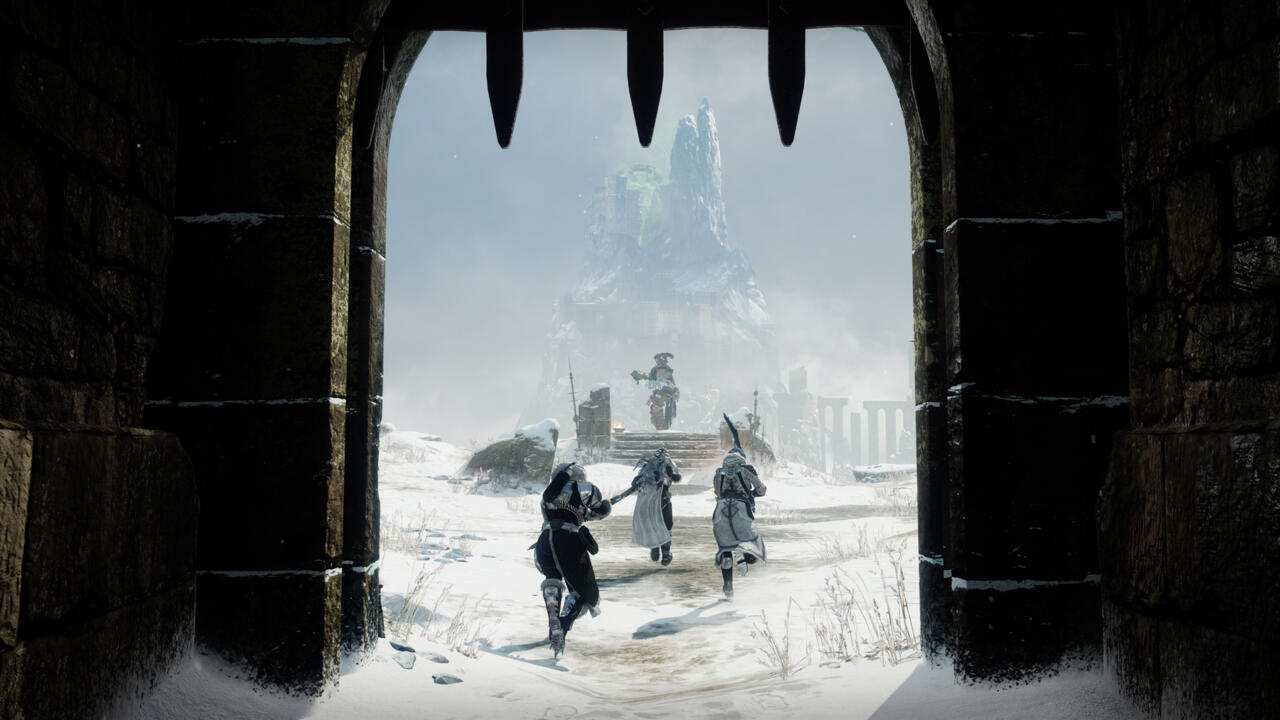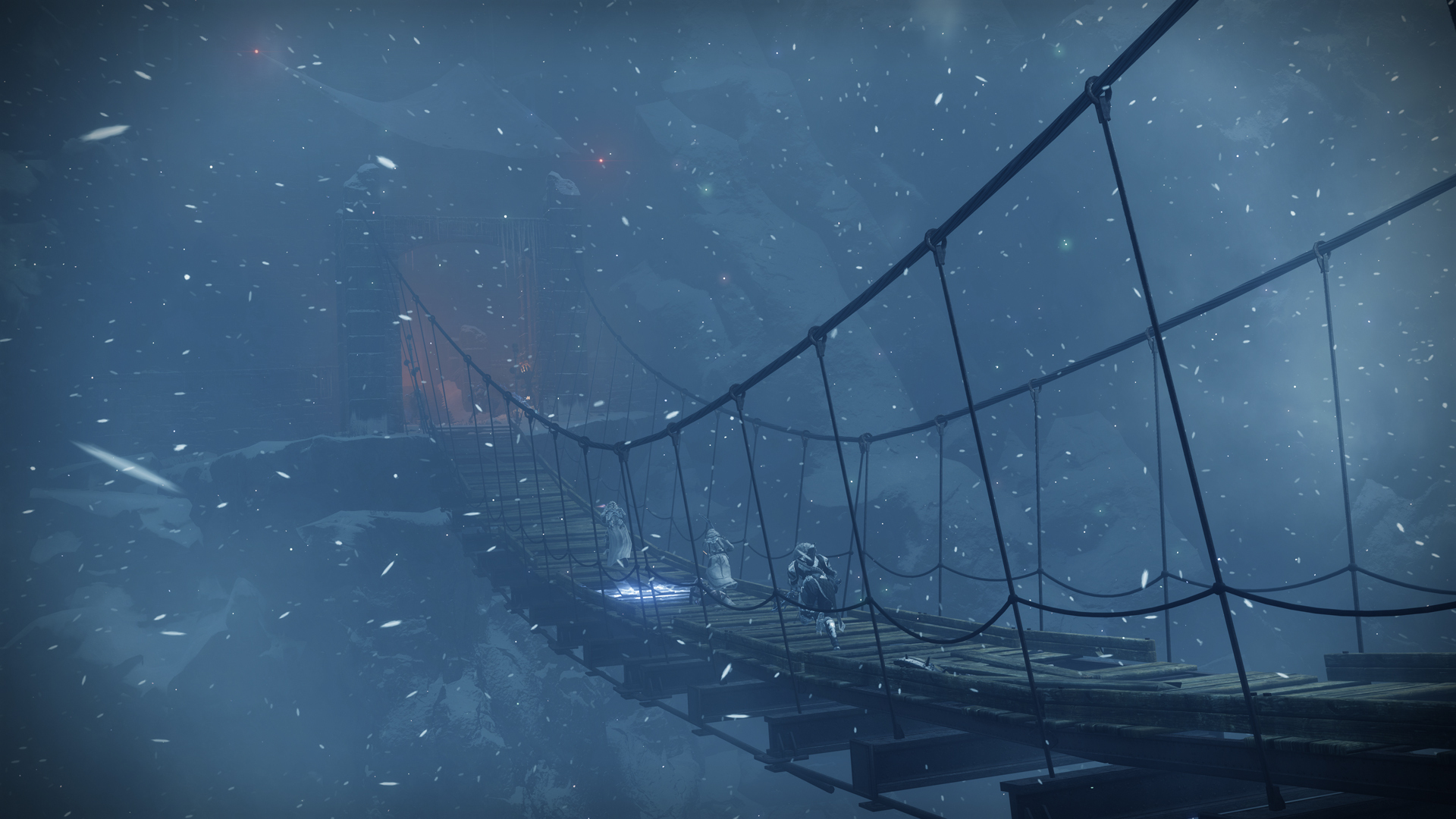Don't miss our holiday offer - 20% OFF!
How Destiny 2 Finally Got A Dungeon Where You Get Trapped In A Literal Dungeon
Warlord’s Ruin, the Destiny 2 dungeon released with Season of the Wish, took players in some unexpected directions when it released on December 1. Where the last two dungeons had a more sci-fi feel, Warlord’s Ruin carries a much more Dark Souls vibe. It takes place in a ruined castle; it’s a dungeon in which you get trapped in a literal dungeon.
But while Warlord’s Ruin and its dark fantasy elements were a surprising and fresh direction for Destiny 2 players, some of those ideas had been floating around with the teams responsible for creating the dungeon for a while.
During a Season of the Wish roundtable discussion, design lead Brian Frank explained that Bungie starts with a brainstorming session to figure out some possibilities for what the dungeon will be, coming up with concepts that take into account several different factors. Playing off the themes of the season is something the team keeps in mind, but so is building novel experiences for players. And of course, not all of those concepts end up getting used.
“We go through a pre-production phase where myself and the area art lead will start by thumbnailing multiple concepts. And we’re looking at recency: What we have done that we don’t want to repeat, or opportunities that are on the table, like, have we ever gone to destination X or Y and encountered antagonists A, B, or C?” Frank said. “So we’re trying to create difference in those pitches, and then we present those to the creative directors for the release and other creative partners and we give them an opportunity to express a preference and tell us, you know, ‘Oh, we’re doing a dragon knight fantasy, so yeah, this season maybe the sci-fi one is not gonna work.’ Or, ‘Here are the characters in the cast that we’re thinking of bringing in, so is there a reason there or an obvious tie into this loose structure you’re proposing?’ And so at that stage it’s really just a setting, it’s the antagonist, maybe a couple of one-line experience goals and a loose narrative premise.

“And then we believe that any of them could be expanded out through our brainstorming and creative direction from other folks to be a fully realized dungeon,” he continued. “And what’s an interesting component of that is it means we often leave ideas behind. It is an interesting case where this idea, of being stuck in a prison and having a literal dungeon to escape, was something that was conceived maybe over a year ago, and it just had not had an opportunity to make sense with the release.”
Those initial one-page concepts for the dungeon led to “a huge series of brainstorming sessions where everyone got to throw in their ideas,” test engineer Amanda Baker said. Those brainstorming sessions go through all the different aspects of the dungeon: There’s a session for narrative, for the player journey or experience elements, for the bosses and gameplay mechanics, and so on. Those collaborative sessions also pulled up elements that developers wanted to revisit, like the snowy mountain feel of the Felwinter Peak location that appeared in the Rise of Iron expansion in Destiny 1 and briefly in a mission way back in the Season of the Worthy.
Through those sessions, the developers figure out how to lock in on the themes of the dungeon and what items from the Destiny toolkit can be used to realize those themes.
“It’s also how we kind of address the gameplay itself, and something as simple as a mechanic we come up with,” she said.
Baker gave an example of a room one designer set aside during the prototype phase, which she filled with Wraiths, the tanky, melee-focused Scorn enemies that populate the later encounters of Warlord’s Ruin. As players discovered, the Wraiths in Warlord’s Ruin are immune to damage thanks to its particular mechanics, but the designer didn’t tell anyone how these Wraiths’ mechanics worked. Baker said she and other developers had a “wild time” trying to figure out how to deal with the Wraiths–which turned out to be a game of tag in which players must punch the Wraiths to transfer a debuff to them, and then play keep-away to avoid getting the debuff back.

The mechanic really started to coalesce as developers figured out how to show players enough information to figure out what was going on, she said. In-game, the debuff is referred to as the “Hex of Vengeful Corruption,” a curse that connected it with the dark fantasy aesthetics and the seasonal themes of wishes and magic.
“And then you get something like the storm in the second encounter that we wholesale lifted out of Europa and put into the encounter,” she said. “Of course, the blizzard matches the theme of being on a mountain and stuff, but then like the warmth, we could have used anything for the fires. And we chose these torches that both match the Scorn theme, but still managed to capture that fantasy theme that we’re pulling off in here.”
Past dungeons like Ghosts of the Deep also had an influence on elements of Warlord’s Ruin. As Frank mentioned, part of the goal with designing dungeons is to avoid repetition in the experiences, and one place in which that’s very apparent is in boss mechanics.
Bosses in Ghosts of the Deep have tough shields you have to break with concentrated fire, as well as a particular buff you get from killing another enemy. Some Destiny 2 players, especially those taking on the dungeon solo, complained about frustrating elements of breaking those shields, and Frank said that feedback informed boss design in Warlord’s Ruin.
“We didn’t introduce [the boss shield mechanic] with the intent that every time was going to have this,” he said. “Part of what we want to do with the dungeon activities is get players expecting to be surprised, right? We’re trying to not overly set a pattern that is super predictable. And so that was an experiment and we saw the impact to solo players, and the bottom line reasoning that we sort of held the line on that is that those combatants have custom behavior when the shield is active. And so we were sort of stuck with, well, if we just take that off, then [players are] not going to see the cool thing that they do. It’s part of why we held the line and that was also in the context of wanting to bring challenge back to the game and we sort of pushed pretty hard with Ghosts. So there was definitely a point of feedback that we focused on when we were working on [Warlord’s Ruin].”


“In all the [Warlord’s Ruin] encounters, we sort of endeavor to give players a means to earn extended DPS (damage per second) time. You can see this where, depending on the number of lanterns or totems that you capture, you can get more time for DPS, and additionally with the final boss, experimenting with this paradigm of the loop structure that gives you more frequent opportunities to do damage. So your perception of how long it takes to earn progress is different than it was in Ghosts, I think for the better–we can agree it’s a more successful format.”
Unlike major expansions, raids, or seasonal stories, dungeons represent a unique opportunity for Destiny 2’s storytelling. As senior narrative designer Nikko Stevens explained, the fact that dungeons are self-contained experiences means the storytelling approach can be more nuanced than with other parts of the game.
“From the narrative standpoint it’s a really fun and gratifying experience to work on dungeons because you have such a cool canvas to work with and you tend to be able to create these encapsulated stories that are linked to other things, but they’re not required to be, you know, directly connected. It gives us the opportunity to kind of dig a little deeper into some of these stories or tell something that you wouldn’t normally see, that’s a little off to the side, but is still important and relevant to the overall story of the game. Or in many cases, the narrative does in some way kind of tip its hat forward to something that is coming. I think if you look back at most of the dungeon narratives, you’ll see that many of them had kind of heralded things that came after.”
Collaborating between the narrative and design teams, Stevens said, allows developers the chances to set up “cool experiences in these bespoke locations.”
“You get to do these cool things. Like, we set up these these scenes of the Scorn who are around a totem, like one has been morphed into an Abomination, or there’s one that you go up to and a whole bunch of Screebs are around [a Scorn enemy] and it’s like its children that it wished to have back, but they were turned into Screebs because it’s the monkey’s paw of the Ahamkara, and stuff like that,” he said. “When you’re doing a seasonal campaign or more of a golden path type of release, you need to shine a spotlight on [those moments] and you need to be able to show the player like, hey, this is what’s happening and we’re explaining it to you so you understand at first grasp. But a dungeon doesn’t have those requirements and we can lean more into the mystique and the mystery, and trust our players to be able to find and experience those cool moments on their own.”


If elements of Warlord’s Ruin were first conceived of more than a year ago, it’s fair to guess that Bungie has more dungeon concepts to draw from for the future. When we’ll see the next dungeon, however, is not yet clear. Destiny 2’s next expansion, The Final Shape, launches in June, and is set to bring a conclusion to the game’s 10-year narrative.
After that, Bungie has announced three major “episodes” in place of its current seasonal approach to additional content, and The Final Shape’s annual pass includes access to two new dungeons that’ll launch later this year. We’ll have to wait for more details from Bungie about when those dungeons will launch, and as Warlord’s Ruin made clear, it’s anybody’s guess what awaits players within them.

